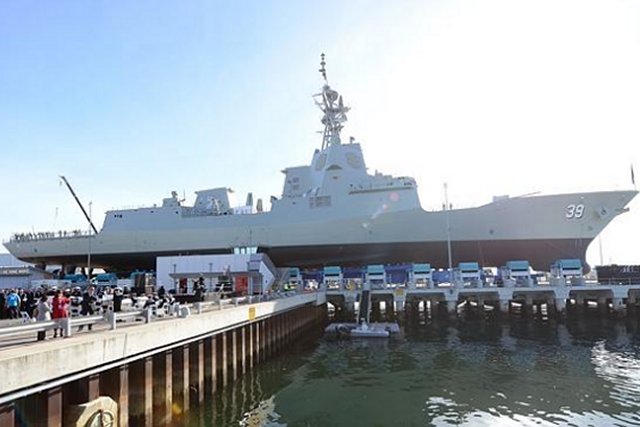Strategic Direction of the Future Submarine Program
(Source: Australian Dept. of Defence; issued Feb 20, 2015)
Today the Government announces the acquisition strategy for the Future Submarine Program. This announcement sets out further details of the competitive evaluation process that will be undertaken by the Department of Defence.
Submarines are an essential component of Australia’s naval capability and the Government will ensure that the future submarine provides the best possible capability and value for money for Australian taxpayers while maximising the involvement of Australian industry.
Submarines are the most complex, sensitive and expensive Defence capability acquisition a Government can make.
Australia’s national security and $1.6 trillion economy depend on secure sea lanes. We need the best possible submarine to protect our trade and support our maritime security.
It must be delivered in time to avoid a capability gap in the mid-2020s when the Collins Class submarine is scheduled to be retired from service. The decisions we make on the Future Submarine Program will determine what kind of capability we have to defend Australia and Australian interests into the 2040s and beyond.
The process outlined by the Government today provides a pathway for Australian industry to maximise its involvement in the program, whilst not compromising capability, cost, program schedule or risk.
The Government expects that significant work will be undertaken in Australia during the build phase of the future submarine including combat system integration, design assurance and land based testing. This will result in the creation at least 500 new high-skill jobs in Australia, the majority of which will be based in South Australia.
The Future Submarine Program is the largest Defence procurement program in Australia’s history and represents an investment in the order of $50 billion in Australia’s security. These costs will be subject to refinement through the competitive evaluation process. A significant proportion of this investment will be spent in Australia during the lifetime of the future submarine.
Successive governments have used various kinds of competitive evaluation processes for major Defence capability procurements.
As part of this competitive evaluation process, the Department of Defence will seek proposals from potential partners for:
a) Pre-concept designs based on meeting Australian capability criteria;
b) Options for design and build overseas, in Australia, and/or a hybrid approach;
c) Rough order of magnitude (ROM) costs and schedule for each option; and
d) Positions on key commercial issues, for example intellectual property rights and the ability to use and disclose technical data.
In addition to this – and on the advice of Defence – the Government has endorsed a set of key strategic requirements for our future submarines:
a) Range and endurance similar to the Collins Class submarine;
b) Sensor performance and stealth characteristics that are superior to the Collins Class submarine; and
c) The combat system and heavyweight torpedo jointly developed between the United States and Australia as the preferred combat system and main armament.
Defence advises that for Australian industry to have the best opportunity to maximise their involvement in the Future Submarine Program, it needs to work with an international partner.
Based on work completed by Defence, France, Germany, and Japan have emerged as potential international partners. All three countries have proven submarine design and build capabilities and are currently producing submarines.
France, Germany and Japan will be invited to participate in this competitive evaluation process (Emphasis added—Ed.) that will assess their ability to partner with Australia to develop a Future Submarine that meets our capability requirements.
The Department of Defence will invite potential international partners to seek opportunities for Australian industry participation in the Future Submarine Program.
The competitive evaluation process will help the Government balance important considerations including capability, cost, schedule, and risk. Interoperability with our alliance partner, the United States, will also be a fundamental consideration.
The competitive evaluation process will take around ten months, after which an international partner will be selected for Australia’s Future Submarine Program. Further details about Australian industry involvement are also expected to be known at that point.
The competitive evaluation process will ensure that capability, cost, schedule, and key strategic considerations, along with Australian industry involvement, are carefully and methodically considered, and avoid unnecessary delays to the Future Submarine Program.
The Department of Defence will soon be holding industry briefings to inform Australian industry about the process and how they can engage with potential international partners.
An expert advisory panel will also be appointed to oversee the competitive evaluation process. Further details about this will be announced once individual appointments are confirmed.
-ends-
http://www.defense-aerospace.com/articl ... plans.html


